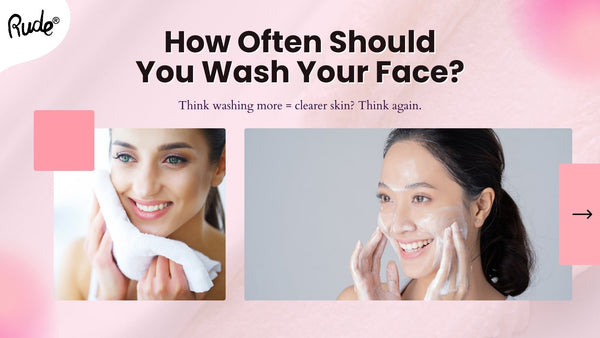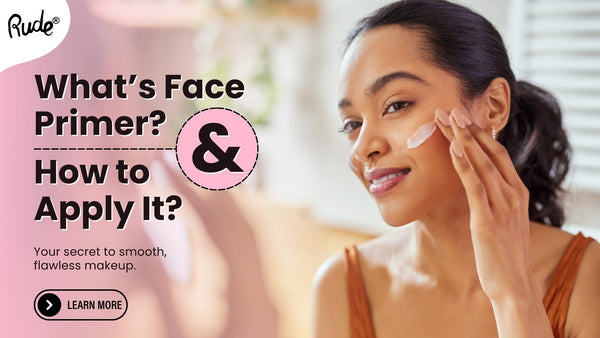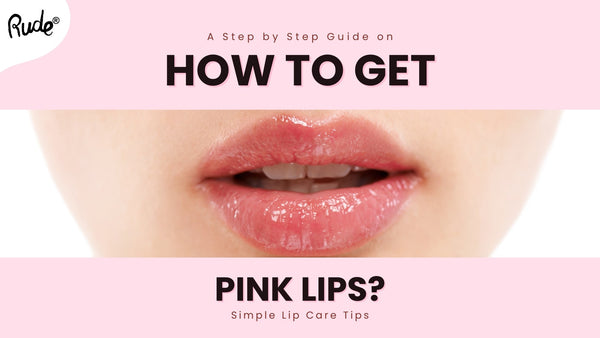How To Get Snatched: Highlight and Contour to Sculpt Your Features

If you are as addicted to TikTok as we are, you probably have heard the iconic “If the men find out we can shapeshift they are going to tell the church!” audio. Then you have seen all the amazing contouring that goes on in these videos. Tiktok and social media have taken highlighting and contouring to a whole new level, often leaving us beginners feeling a little left behind.
Social media has become one of the most used platforms to market makeup and share makeup tips. It has also created a need for people to become more creative when creating content to grab people’s attention. But in reality, you do not need a fork to contour your nose, or a knife to contour your cheeks. Please leave all eating utensils in your kitchen where they belong!
Contouring and Highlighting isn’t new, however. There’s a very long history of people adding dimension to their faces.
In the 16th Century, contouring was used by Elizabethan stage actors, who would apply chalk and soot to their faces to help audience members read their facial expressions. In the late 1800s, when electricity was invented and lights were widely used, soot was no longer an option. Instead, actors would use greasepaint to help the audience decipher their emotions. During this time, however, Queen Victoria deemed makeup as vulgar, and only stage actors and prostitutes wore makeup. Therefore it could only be purchased in costume stores.
In the 1920s and 1930s, contouring could be seen in films. In 1934, makeup artist Max Factor Sr. was famous for applying makeup to stage actors. In 1945, he presented the first tutorial on how to contour the face for different face shapes. In the 1950s, features were subtly contoured and shaded, a method used by famous actresses such as Audrey Hepburn, Marilyn Monroe and Elizabeth Taylor. In October 2000, makeup artist Kevyn Aucoin published his industry defining book “Face Forward” which became widely noted for introducing contouring to the general public for the first time.
A part of the history of contouring that is not so talked about until recently, is that drag queens have used contouring for many many years. Drag queens have used makeup for contouring since the 1880s, before it became popularized in the media by actresses and famous makeup artists. Contouring was used in the drag community for years to help achieve more feminine looking features. Throughout the years, contouring has evolved from being used to look feminine into more an artform, with drag queens using it to create amazing looks with different colors and shapes, like Trixie Mattel and Crystal Methyd. But contouring did not become the viral success it is today until the 2010s, thanks to Kim Kardashian.
In 2012, Kim Kardashian tweeted a photo of herself demonstrating before and after contour applied by Scott Barnes, her makeup artist at the time. When this photo came out the internet went wild, and once everyone realized that they too could have Kim K cheekbones with a stroke of a brush, contouring was soon trending. It became a huge phenomenon in the coming years, with everyone from models to actresses and Youtubers all sculpting their features. Pretty soon the subtle shading used by makeup artists became a little more obvious. All different kinds of contouring exist now like strobing, colored contour, and even henna and fake tan contouring (aka “tantouring”).
But you do not need all that! How many times have you tried to follow a contouring tutorial and wound up looking like you rubbed mud all over your face? Who remembers “clown contouring,” the trend where you used your highlight and contour to create a clown face before blending it out? Oftentimes, “makeup gurus” seem to forget to mention something very important: all the makeup they use is meant to be for lights and cameras. Let’s be real, the average person does not live their life behind a camera. That being said, keep reading for a guide on contouring and what products you can use to help you achieve that chiseled look.


The key to contour is blending. Contour can either be your best friend or your worst enemy depending on how well you blend. To contour and highlight you will need a shade darker than your skin tone and a shade lighter than your skin tone. Contouring means mimicking a shadow on your face that is typically not there unless you are being hit by light at certain angles. These shadows are typically more cool toned or “gray,” so we recommend using a cool toned contour shade for a more natural look. If you are looking for a more bronze or sun kissed look, a warmer toned contour shade or a bronzer will work perfectly. To highlight you will simply need a concealer shade lighter than your skin tone or you can also highlight using powders, such as a lighter powder foundation or even a translucent powder.

Nowadays, there are products specifically made for contouring and highlighting; long gone are the days of using chalk, soot and greasepaint! Our Rude Cosmetics Magic Duo Highlight & Contour is great because you have a contour and highlight shade in one, the shape gets a more precise contour, and the creamy formula makes it super easy to blend. However, this product only comes in 4 shades, and we understand that not all shades are universal. You do not need a product to be specifically for highlight and contour, you could use concealers or foundation to highlight and contour. Try out the Reflex Waterproof Concealer, the packaging for this concealer comes with a small brush at the tip to help you achieve a precise application. Alternatively, you can use the Sculpting Concealer for a more full coverage and lighter feel, and with 14 shades to choose from there is no doubt that you will find the perfect shades to highlight and contour.

To highlight and contour with creams, like concealers and foundations, you will need small amounts. If you are a beginner it might be a good idea to do sections of the face. For example, if you want to contour your nose, begin with drawing two lines down the sides of your nose, and remember the closer the lines are to each other the smaller your nose will appear. If you want to create the illusion of a button nose, continue the steps of the contour, and at the tip of the nose draw a small circle or oval shape. PRO TIP: for a lifting effect, shade the bottom part of the tip of your nose, this will help create the illusion of a small button nose. Use a bit of highlighter on the tip of the nose, and down the bridge of the nose to clean up the contour a bit and give a lifting effect. If you feel like your contour is a bit wide or muddy down the sides of your nose, an easy fix is to use loose powder down the sides of your nose to defuse the contour. Doing this will also help your nose look a little more “snatched”. However, remember that everyone’s face shape and noses are different, finding the right way to contour for your face shape might take a bit of practice. Once you have the contour and highlight down for your nose, it is time to move on your face. Like the nose contour, finding the right way to contour for your face shape will take some practice. The basics to contouring the face are to contour high underneath the cheekbones, high around the forehead and under jaw. Highlight the undereyes, chin, and center of the forehead.

If you are a beginner at makeup and you are just starting to get into contouring, cream contour might not be for you. Powder contour exists and it can be easier to work with and blend than cream contour. Rude Cosmetics has so many different products to help you achieve that chiseled look. In Your Face 3-in-1 Palette by Rude Cosmetics has all the shades you will need to contour and highlight, and it even includes eyeshadows and eyebrow powders. If you are looking for a more bronzed look, try out the Go For The Bronze Bronzer, which comes in 4 beautiful sun kissed shades, perfect for a natural looking radiance.

To contour using powder you can pick up some product with a brush and in small circular motions blend the powder in the areas you would like to define. PRO TIP: for a precise nose contour with powders, use a small eyeshadow blending brush. When highlighting using powders, use a powder that is lighter than your skin tone, grab a powder brush and simply pat the powder on the areas you would like to highlight.
- Glitter Eyeshadow: Adds a sparkling touch to your eyes for a dazzling, party-ready look.
- Makeup Highlighter: Accentuates your features by adding a radiant glow to your skin.
- Waterproof Concealer: Provides long-lasting coverage that stays put even through sweat and tears.
- Contour And Highlight: Sculpt and define your facial features for a perfectly chiseled look.
- Face And Body Glitter: Adds shimmering brilliance to both face and body for an all-over sparkle.
- Face & Body Glitter: Versatile glitter that enhances both facial and body makeup with luminous shine.
Read Our Related Products
Whether you want a subtle natural looking contour, or you want to contour your face with blush and powder like the e-girls on TikTok, Rude Cosmetics has a product for everyone. Entirely cruelty-free and pigmented, make sure to check out all our contour and highlight products at rudecosmetics.com/collections/highlight-contour.
Don’t forget to follow us on IG at www.instagram.com/rudecosmetics.




